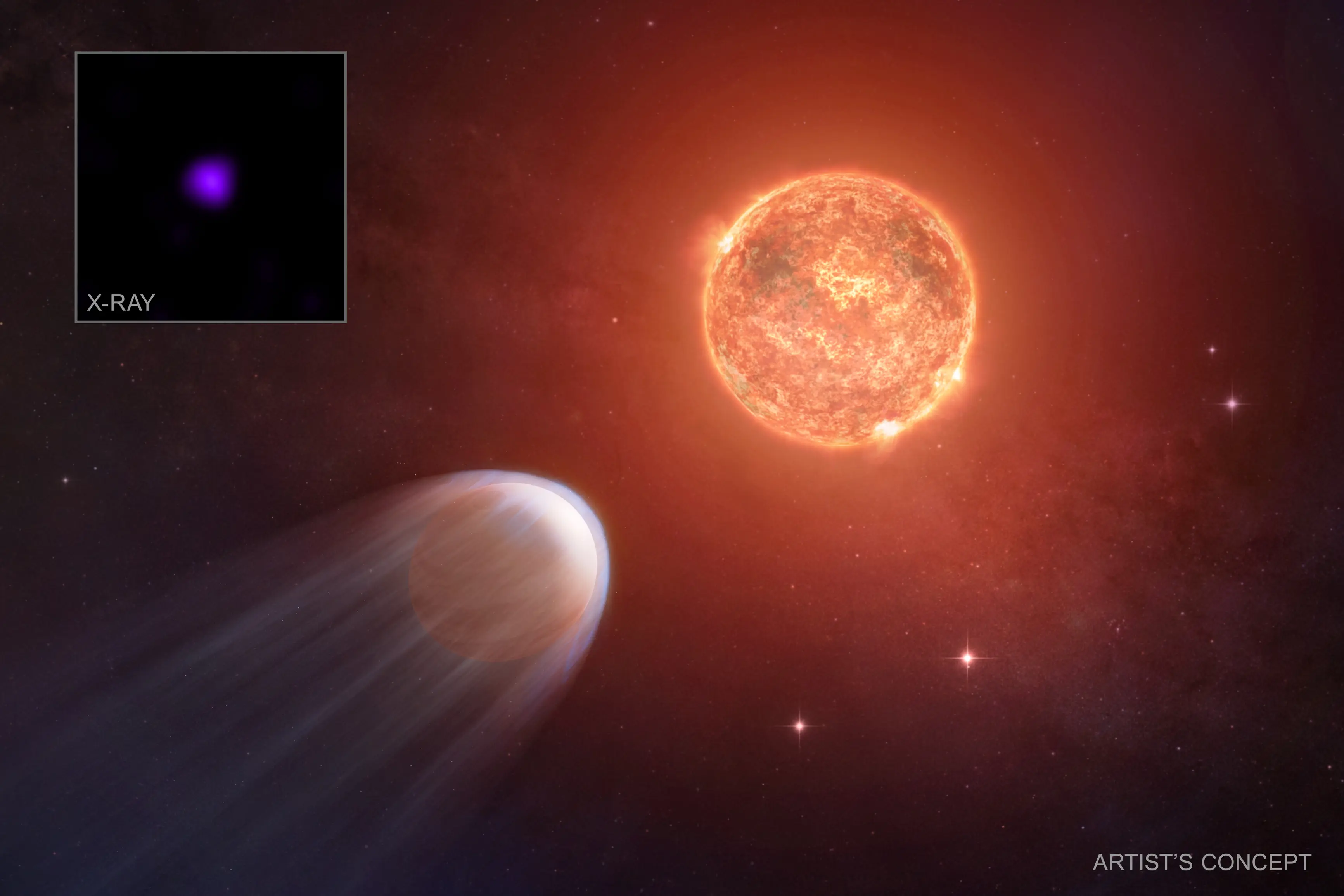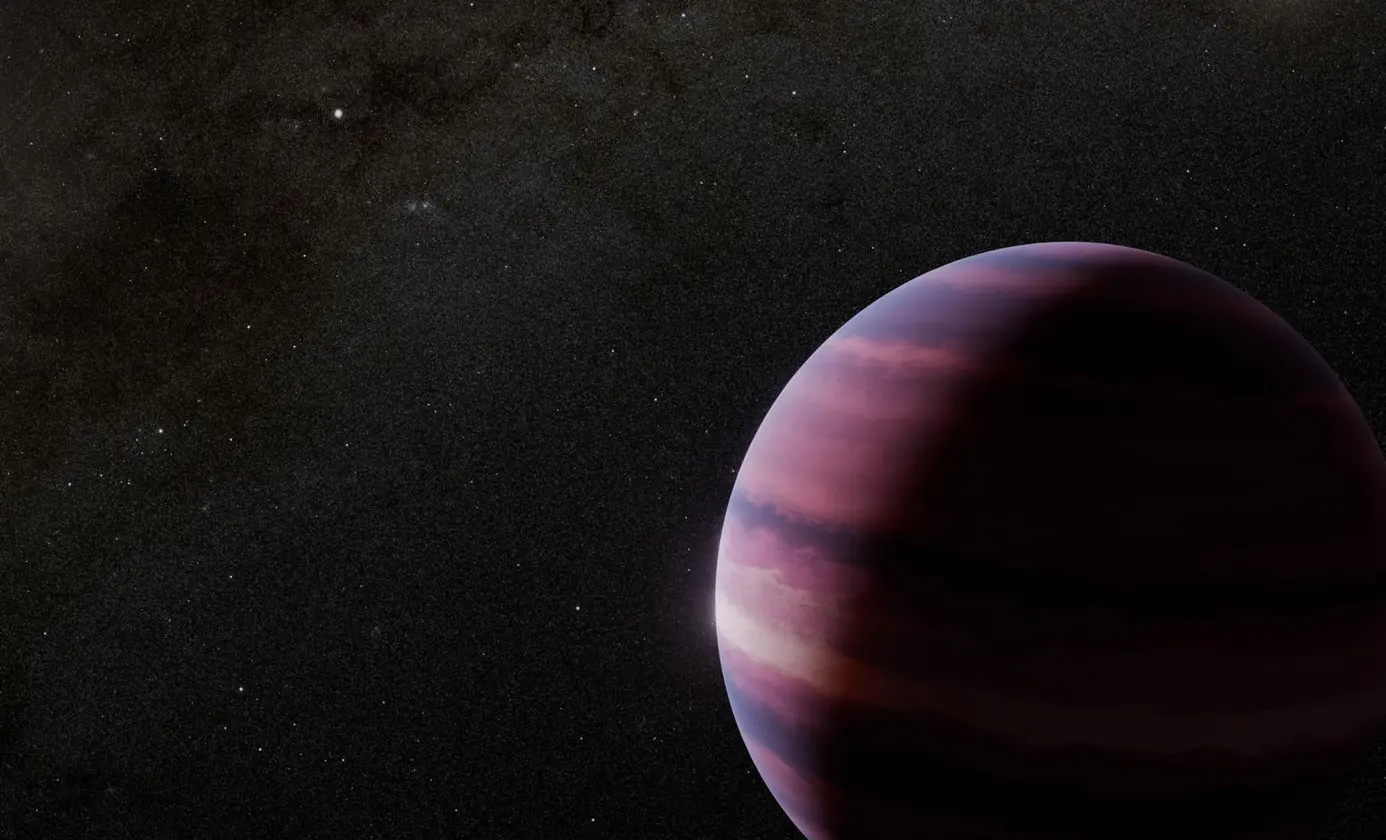T4K3.news
Chandra Observes Rapid Atmosphere Loss on Exoplanet
NASA's Chandra X-ray Observatory finds TOI 1227 b losing its atmosphere rapidly due to star's X-rays.

A young exoplanet is shrinking due to X-ray radiation from its star.
NASA's Chandra Observes Exoplanet Losing Atmosphere
NASA’s Chandra X-ray Observatory has revealed that a young exoplanet, named TOI 1227 b, is rapidly losing its atmosphere due to intense X-ray radiation from its host star. Located about 330 light-years away, this barely eight million-year-old planet is being stripped of its atmosphere at an alarming rate, estimated to completely disappear in about a billion years. The research indicates that TOI 1227 b could shrink significantly, losing more than 10 percent of its current weight and reducing to one-tenth of its size in the future. The implications of this study highlight the importance of understanding how high-energy radiation affects exoplanets, and why TOI 1227 b is unlikely to support any form of life.
Key Takeaways
"The planet’s atmosphere simply cannot withstand the high X-ray dose it’s receiving from its star."
This quote highlights the harsh impact of radiation on the planet's atmosphere.
"The future for this baby planet doesn’t look great."
This reflects the grim projection for TOI 1227 b as it continues to lose its atmosphere.
This discovery emphasizes how critical stellar activity impacts planetary development. The status of TOI 1227 b raises questions about the future resilience of other exoplanets around similar stars. Scientists must consider how factors like X-ray emissions shape atmospheres in their explorations of potentially habitable worlds. Understanding these processes can inform us about the life cycles of planets and their potential for supporting life. As more research unfolds, we may discover that many exoplanets face hostile environments, challenging our views on where life may thrive in the universe.
Highlights
- TOI 1227 b may become a barren world due to its star's wrath.
- A stellar bombardment like no other strips away TOI 1227 b's atmosphere.
- This planet's future is grim, losing its size and weight rapidly.
- The storm of X-rays is reshaping TOI 1227 b's destiny.
Potential Concerns for Exoplanet Research
The rapid degradation of TOI 1227 b's atmosphere raises important discussions about the conditions that support life on exoplanets. Understanding these dynamics is crucial for future astronomical studies.
As researchers continue to explore the cosmos, TOI 1227 b serves as a reminder of the dynamic nature of planetary systems.
Enjoyed this? Let your friends know!
Related News

New Exoplanet Discovery Revealed

JWST Finds No Earthlike Atmosphere on TRAPPIST-1 d

Astronomers Discover Unique Planetary System

James Webb will study extreme lava planets

Prochlorococcus at risk from warming

Life around white dwarfs analyzed

Earth like TRAPPIST 1e Hint Emerges

Webb Telescope reveals exoplanet candidate and Pluto haze
